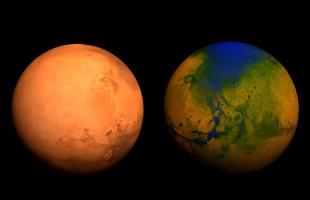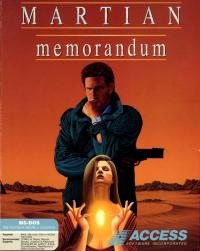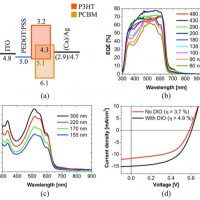Copy Link
Add to Bookmark
Report
The Martian Chronicle No 01

T H E M A R T I A N C H R O N I C L E
March 1990 (Edited by J.D. Beish for ASTROFORUM) No. 1
Mars is back! Throughout 1990 the Red Planet will become more prominent in
the morning sky until it reaches opposition on November 27. Although Mars'
apparent diameter will not be as great as it was in 1988, it will still be
a most respectable 18.1 arc-seconds, permitting high resolution photography
and quality visual observations of surface features, clouds, and the South
Polar Cap (SPC). The planet will be very favorably placed in the sky for
northern hemisphere observers, remaining north of the celestial equator
between mid-June, 1990 and September, 1991 and attaining a declination of
+22 degrees during the 60-day period around opposition.
Practically speaking,the apparition will commence on April 7, when Mars
attains an apparent disk diameter of 6 arc-sec, allowing quality telescopic
observations. However, A.L.P.O.'s International Mars Patrol (IMP) astronomers
are encouraged to make observations even when the planet appears smaller.
While little or no fine detail can be discerned when the planet is low and of
small apparent size, gross features, such as Syrtis Major, can be seen. If the
observer has been regularly recognizing such features and suddenly notes their
disappearance, one is led to suspect an obscuration, such as a dust storm. In
the past, such sightings made independently by several observers have shed new
light on the history of Martian dust storms, even when the planet subtended an
angle of less than 6 arc-seconds. A red (Wratten 25 or equivalent) filter is
strongly recommended since it improves image contrast and reduces the apparent
seeing effects, since red wavelengths are refracted less.
MARTIAN SEASONS
During most of the 1990-91 apparition Mars' South Pole will be tilted earth-
ward with most of Southern Hemisphere spring and all of summer and part of
southern autumn being observable. Thus astronomers can again study the regress-
ion of the SPC and follow both Martian antarctic and arctic meteorology. This
apparition should also allow careful scrutiny of the summer SPC remnant. As
Mars will have an apparent diameter of over 13 arcseconds at southern autumnal
equinox (Jan. 5, 1991), there will be an excellent opportunity to determine
whether the remnant disappears completely or, as was the case in 1988-89, it
remains throughout southern summer.
IMP astronomers will have an unusual opportunity in early 1991 to watch for
the possible reformation of the SPC. During early Martian southern autumn
(January to April TD) the planet's apparent size will remain respectable and
its south pole will be tilted earthward, permitting detailed study of antarc-
tic regions. Does the South Cap expand during this period, or are its secrets
hidden beneath the south polar hood? In fact, does a hood actually form, or
are hoods phenomena restricted to the North? We hope that the IMP can provide
some answers to these questions in 1991.
SURFACE FEATURES
Several regions have displayed long-term, or secular, changes in recent years
and should be monitored closely during the 1990-91 apparition. These include
Solis Lacus (85W, 28S), Daedalia-Claritas (115W, 30S), Phasis (109W, 30S),
eastern Sirenum M. (145W, 35S), southern Memnonia and Zephyria, Trivium
Charontis (198W, 20N), Cerberus II (212W, 10N) and III (240W, 18S), Elysium
(215W, 80N), Hyblaeus (230W, 30N), Nilosyrtis, and Syrtis Major. In addition
the Libya-Isidis (275W, 10N) area should be scrutinized to see whether Nodus
Laocoontis (246W, 20N) and Thoth-Nepenthes (265W, 15N) are still markedly
faded.
DUST STORMS -- A REVISED VIEW
Mars will reach perihelion on June 29, 1990, at which time it will have a
respectable apparent diameter of 7.8 arc-seconds. Classically, perihelion
passage, which occurs in late southern spring, heralds a period when global
dust storms occur. Martian dust storms have been the subject of much media-
hupe recently, but in point of fact there have been only five well-document-
ed GLOBAL dust storms on the Red Planet: in 1956, 1971, 1973, and 1977 (two).
Furthermore, the concept of a true "dust storm season" on Mars is now open to
question: it may well be that dust clouds can occur at any season on Mars.
However, Beish's comprehensive analysis of IMP data reveals that there is
increased probability of seeing dust storms soon after the planet's perihe-
lion passage, with a second peak occurring in mid southern summer. Thus the
1990-91 apparition will present an excellent opportunity for monitoring the
occurrence (or non-occurrence!) of dust clouds. This is of considerable
importance for our understanding of Martian climate and meteorology and for
future space exploration.
The dust storms of Mars have once again become the subject of much study among
professional planetary astronomers. However these men and women have neither
the funding nor manpower for a 24-hour worldwide surveillance of the planet.
A.L.P.O.'s IMP can provide considerable support in this regard as it did dur-
ing the 1988 apparition. Thanks to recent developments in communication tech-
nology, we can now have virtually instantaneous alerts for unusual Martian
phenomena. When such an event is sighted the observer contacts one of the Mars
Recorders who then informs the rest of the IMP network. Upon verification the
appropriate professional astronomers are contacted so that they can conduct
detailed investigations.
STORM WARNING. To facilitate communication Beish and Parker will monitor
Compuserve daily during the apparition. Please send messages to both Parker,
72317,3157 and Beish, 72317,3306. If you have no access to a modem, Dan
Troiani has kindly volunteered his phone number: (708) 529-1716. Professor
Asada, 71701,1534, in Japan is now on the Compuserve network, which provides
us with virtually instant communication with our friends in the O.A.A. We hope
that our other observers abroad will be able to avail themselves of this
service.
*** DANGER ***
The one thing that must be avoided in reporting dust storms is a false alarm.
Our mentors in the professional community take a dim view of wasting consider-
able time and money on spurious information. Thus, after consultation with
professionals, we have revised our criteria for Martian dust activity.
The astute reader will note that nowhere in this chronicle has the adjective
"yellow" been applied to dust. In the past we have referred to dust storms as
"yellow clouds" and "yellow dust storms." We feel that this is misleading.
First, it is virtually impossible to see or even photograph accurate colors on
Mars without employing very specialized techniques. Traditionally, observers
have employed yellow filters to better reveal dust clouds. The problem is that
nearly EVERY light feature on Mars is bright through a yellow filter! In
November, 1989, we were fortunate to have a professional Mars astronomer spend
several days in Miami reviewing IMP dust storm data. Under his guidance we have
revised our definition of dust clouds/storms.
*** NEW CRITERIA FOR MARTIAN DUST STORMS ***
1. They must appear bright in red light. Dust clouds can be bright in all spec-
tral regions, including violet, but if they are not bright in red, they are
most likely not dust. This means that observing and photographing Mars through
a red filter is a "must" for IMP astronomers. A Wratten 23A will suffice for
instruments of 20 cm ( 8 inches) or less in aperture, while a W-25 or even 29
should be employed with larger instruments.
Photographing Mars through filters presents problems to the amateur observer
because exposure times are often prolonged beyond the capabilities of his or
her drive and the limits of seeing conditions. In such cases observers are
strongly requested to photograph Mars on color slide film. They can than re-
photograph them through appropriate filters onto black-and-white film. This
technique is fully discussed in Parker, et al., Journal of the Association of
Lunar and Planetary Observers (J.A.L.P.O., Vol. 31, Nos. 9-10, July, 1986,
and in "Introduction to Observing and Photographing the Solar System." Those
who are unable to use this technique are encouraged to send the recorders
quality copies of their slides for analysis. Copies should be made on Kodak
Slide Copy film 5071 to insure good grain and color balance. Commercial copies
are suggested for this film. If copies are made at home, we suggest Fujichrome
CDU film. Following the advice of John Sanford, we have tried this film and
have found it much easier to use than Kodak 5071. If originals are submitted,
we cannot guarantee their return. We commend those observers who have regularly
submitted color filter photographs of Mars during past apparitions. These
include B. Flach-Wilken (Germany), B. Adcock (Australia), and Japan's T.
Akutsu, T. Ishibashi, N. Matsumoto, and T. Nakugami.
2. The sine qua non of Martian yellow clouds is movement with obscuration of
previously well-defined albedo features. Absence of this criterion disqualif-
ies a candidate from inclusion under dust clouds.
3. When these clouds reach heights of several kilometers, we have proposed
that they may cast shadows that are observable from Earth. There are numer-
ous reports of anomalous transient dark surface markings appearing near yellow
clouds, especially when the solar phase angle was reasonably large. Anomalous
dark markings were in fact seen in conjunction with both 1988 dust storms.
THE A.L.P.O. MARS SECTION -- 1990
We wish to take this opportunity to thank the 300 IMP observers who sub-
mitted over 7,000 drawings, photographs, and micrometer measurements of Mars
during the 1987-1989 apparition. Such an effort is most gratifying but has re-
quired some reorganization of the Mars Section. In addition to taking on more
recorders, we have assigned each recorder to a geographical area. Observers
should correspond with the recorder in his or her area:
JEFF BEISH, 9460 Toni Dr., Miami, Fl, 33157
AL, AR, FL, GA, HA, KY, MS, NC, SC, TN, and VA.
HARRY CRALLE, 3902 E. 29th St. (J-4), Bryan, Texas, 77802
AZ, CA, CO, KS, LA, MO, NV, NM, OK, TX, UT, and WY.
CARLOS HERNANDEZ, 2714 Plaza Dr., Woodbridge, NJ, 07095
AK, CT, DC, DE, MA, MD, ME, NH, NJ, NY, PA, RI, and VT.
DON PARKER, 12911 Lerida St., Coral Gables, FL, 33156
U.S. Territories and Possessions and all areas outside U.S.
DAN TROIANI, 629 Verona Ct., Schaumberg, IL, 60193
IA, ID, IL, IN, MI, MN, MT, ND, NE, OH, OR, SD, WA, WI, WV.
*** GUIDELINES FOR IMP OBSERVERS ***
1. Observations. Submit these to your appropriate recorder. If you want to be
assured of their arrival, enclose a stamped, self-addressed postcard with your
material. This is the cheapest and easiest way. We cannot acknowledge all the
observations received. Drawings should be made on 42-mm diameter disks, or on
the standard B.A.A. 2-inch disks. We employ overlay templates for data reduct-
ion, and other sizes are unacceptable. Photographs should be approximately
1-inch diameter, so that they can be published properly. However, any photos
will be welcome! Do not send negatives. We welcome videotapes (VHS or Super
VHS), but do not send originals. Please edit videos -- no more than 5 minutes
per observation. We fall asleep easily. Please include date, times.
2. Observing Forms. Send a stamped, self-addressed envelope (SSAE) to Beish or
Parker. They will return it with an A.L.P.O. Mars Section observing form en-
closed from which you can make copies. A copy of Ebisawa's excellent map of
Mars will also be included upon request.
All observations must have the observer's name, the U.T. date, the starting
and ending U.T.'s, and the telescope, magnifications, and filters employed.
Mark drawings and photos with "South" and "Preceding" so that we know the
orientation. Other information, such as C.M. and Ls, is not required but is
appreciated.
3. Correspondence. All correspondence should contain an enclosed SSAE. Remem-
ber that the A.L.P.O. staff is volunteer -- both with time and money!
4. Martian Chronicles. Those who wish to subscribe should send 6-8 SSAE's to
Beish or Parker. Overseas members cannot send stamps but often send internat-
ional postal certificates with their envelopes. We wish to thank the many
observers abroad who did this during the last two apparitions. Their help was
much appreciated!
5. A.L.P.O. Membership in A.L.P.O. is not required for the IMP. However, we
strongly urge our observers to join if for no other reason than they can see
the fruits of their labor in print in the apparition reports and other papers
in The Strolling Astronomer. Subscribing to the J.A.L.P.O. also gives one the
opportunity to read about others' observational techniques and methods of data
reduction. In addition, the observer may find other fields which stimulate his
interest, such as observing Pluto. U.S., Canada, and Mexico, send $14 for one
year or $24 for two years to Harry D. Jamieson, P.O. Box 143, Heber Springs,
Arkansas, 72543. Other countries: $16 for one year, $29 for two.
6. Observing Aids.
a) Mars Observer's Handbook, by J.D. Beish and C.F. Capen. This is being re-
published by the Institute for Planetary Research Observatories. It is a 55-
page, copiously illustrated book on Mars observing techniques, including how
to make drawings and micrometer measurements, tips on photography, use of
filters, etc. Send $10.00 to Jeffrey D. Beish, 9460 Toni Drive, Miami, Florida
33157.
b) The A.L.P.O. Solar System Ephemeris: 1990. This contains the complete
ephemerides for the Sun, Moon, planets and minor planets as well as selected
comets. This is a "must" if one is to get full enjoyment from his observing.
Send $6.00 to A.L.P.O., P.O. Box 16131, San Francisco, CA 94116.
c) Introduction to Observing and Photographing the Solar System, by T.A.
Dobbins, D.C. Parker, and C.F. Capen. Contains both theoretical and observat-
ional information on Solar System objects. Very detailed chapters on Mars,
astrophotography, micrometry, etc. Forward by A.L.P.O. founder Walter H. Haas.
Hardcover, $19.95 from Willmann-Bell, Inc., P.O. Box 35025, Richmond, VA
23235, (804) 320-7016.
d) IMP Astronomical Calculator (IMPAC). Computer program containing complete
ephemerides of Mars and Jupiter for any year and geographical location. Also
rise and set times, altitude, azimuths for all Solar System objects for observ-
er's location. Automatic correction for Daylight Time, lunar phases for star
party planning, telescope and mirror cell design, and comprehensive astro-
photography program. Subroutines for color filter calculations and automatic
computation of Martian polar cap and Jovian belt latitudes from observer's
input. For IBM XT, AT and compatibles, monochrome, EGA, or VGA. For a 5.25-
inch diskette, send $49.95 to J.D. Beish at above address.
Again, many thanks to the dedicated IMP observers for their excellent work in
the past. In the past, some observers have not sent in their observations be-
cause they felt their work inadquate, please send them, especially those color
photographs -- how many discoveries go undetected............................?
The Association of Lunar and Planetary Observers -- International Mars Patrol
Good Seeing in 1990-91!
Don Parker Jeff Beish Carlos Hernandez
Harry Cralle Dan Troiani


















